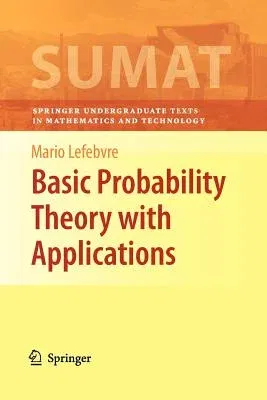Mario Lefebvre
(Author)Basic Probability Theory with Applications (2009)Paperback - 2009, 7 March 2012

Qty
1
Turbo
Ships in 2 - 3 days
In Stock
Free Delivery
Cash on Delivery
15 Days
Free Returns
Secure Checkout
Part of Series
Springer Undergraduate Texts in Mathematics and Technology
Print Length
340 pages
Language
English
Publisher
Springer
Date Published
7 Mar 2012
ISBN-10
1461429234
ISBN-13
9781461429234
Description
Product Details
Author:
Book Edition:
2009
Book Format:
Paperback
Country of Origin:
NL
Date Published:
7 March 2012
Dimensions:
23.39 x
15.6 x
1.88 cm
ISBN-10:
1461429234
ISBN-13:
9781461429234
Language:
English
Location:
New York, NY
Pages:
340
Publisher:
Weight:
498.95 gm

